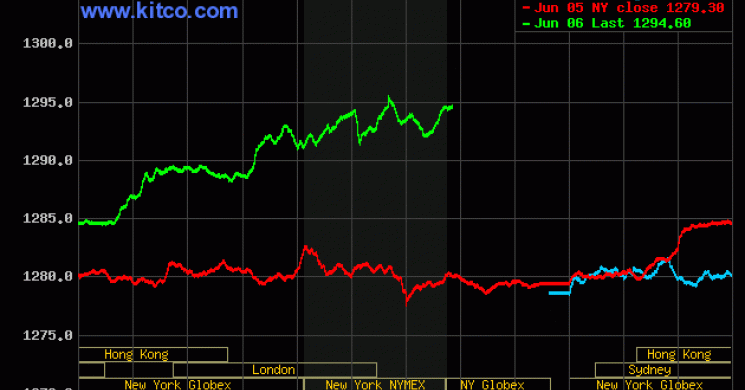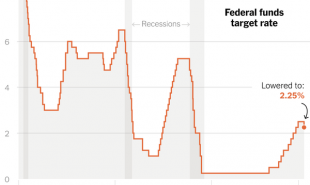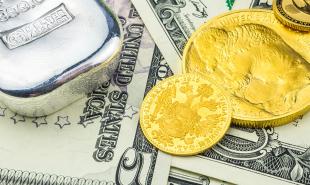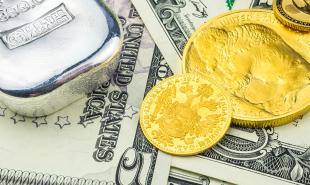
Polishing cloth
“The desire for gold is the most universal and deeply rooted commercial instinct of the human race.” So said Gerald M. Loeb, founding partner of Wall Street brokerage E.F. Hutton & Co. and “the most quoted man on Wall Street” according to Forbes, in his 1935 book The Battle for Investment Survival.
Investors seem to agree, of late; spot gold today rose to its highest levels since November near $1,295 per ounce, good for a 13% gain so far in 2017.
In so doing, the yellow metal broke a technical downtrend that has been in place since its September 2011 peak of $1,900 per ounce, according to Sheba Jafari of Goldman Sachs. Still, true believers don’t have too much to be excited about as yet, gold’s weekly average price over the past five years of about $1,314 per ounce is 1.5% higher than current levels.
The pep in the yellow metal may be evidence of market fear rather than reflationary exuberance. The Chinese Gold and Silver Society Exchange expects 2017 mainland gold imports to increase by 50% from the prior year, amidst increased safe haven demand. Likewise, the Japanese yen sits at its strongest level against the greenback in nearly six weeks in another sign of retrenching risk appetite.
Stateside, the spread between two- and ten-year U.S. Treasury note yields has narrowed to around 85 basis points, its lowest since September: Steepness, or lack thereof in the Treasury curve, has historically signified market expectations for economic growth.
Simultaneous weakness in the dollar and commodity prices that has included eight month lows in the DXY U.S. Dollar Index in tandem with a near one year nadir in the Thompson Reuters/CoreCommodity CRB index could be another cause for concern.
Not much concern is evident in the equity or derivatives markets. The CBOE VIX Volatility index has been stuck near 10 for the past six weeks, a level roughly half of its average back to 1997, with the last tick of 20 or higher occurring prior to Election Day.
The major equity indices have in turn fluttered higher. Spurred by surges ranging from 25%-33% from the FAANG (Facebook, Apple, Amazon, Netflix and Google) group, the S&P 500 has tacked on nearly 9% and the Nasdaq 100 nearly 21% for 2017 so far. As a result of their strength, those five names now represent nearly 12% of the SPDR S&P 500 ETF and more than 33% of the Powershares QQQ Nasdaq 100 ETF.
While the virtuous cycle of outperformance and increased weightings in those market capitalization-based indices has proven a boon for owners of the FAANG stocks, we can’t help but notice that the circus tent of this current bull market is currently being held up by relatively few poles.
CLICK HERE to begin a six-issue Trial Subscription to GRANT'S
Full speed ahead
The auto market may be sputtering, with industry sales seeing a fifth straight annual contraction in May and inventories piling up at their fastest pace since 2009, but new formats for selling vehicles, and equity to the public, abound.
Online listing platform Cars.com recently debuted on the New York Stock Exchange, currently sporting a roughly $2 billion market capitalization against 2016 pro-forma revenues of about $663 million. In its S-1 registration, the company advises that it is classified as an “emerging growth company” according to the 2012 JOBS Act, and as such: “is eligible to take advantage of certain exemptions from various reporting requirements that apply to other public companies, including, but not limited to, scaled disclosure provisions with respect to financial information and executive compensation.”
Meanwhile, reporting today for the first time as a public company is Carvana Co. The Phoenix based spin-off of DriveTime Automotive Group, Inc. is a purveyor of used automobiles, described as “Amazon-like” by an analyst on the sell side. Their method of distribution? Seven-story glass-sheeted vending machines.
Longtime readers of Grant’s may recall the colorful back story. As Bloomberg today disclosed (you didn’t see it in the S-1), Ernest Garcia II, the controlling shareholder and father of CEO Ernest Garcia III, was convicted of securities fraud in 1990 related to the failure of the Lincoln Savings & Loan, featuring a scandal that implicated five U.S. Senators—“the Keating Five.” From the New York Times 2014 obituary of former Lincoln Savings and Loan CEO Charles H. Keating Jr.:
In three years, Lincoln’s assets soared to $3.9 billion, from $1 billion, and Mr. Keating was using the business as his personal cash machine, taking $34 million for himself and his family and $1.3 million more for political contributions, prosecutors said.
The Federal Home Loan Bank Board, fearing wide collapses in a shaky industry, finally imposed a 10 percent limit on risky S.&L. investments. By 1987, its investigators found that Lincoln had $135 million in unreported losses and was more than $600 million over the risky-investment ceiling. Soon, the F.B.I., the Securities and Exchange Commission and other agencies were homing in.
Mr. Keating hired Alan Greenspan, soon to be chairman of the Federal Reserve, who compiled a report saying Lincoln’s depositors faced “no foreseeable risk” and praising a “seasoned and expert” management. Mr. Keating soon called on five senators who had been recipients of his campaign largess — Alan Cranston of California, Donald W. Riegle Jr. of Michigan, John Glenn of Ohio and Dennis DeConcini and John McCain of Arizona — to pressure the bank board to relax its rules and kill its investigation.
“A `thrift’ for our time” was the headline over the Grant’s story of May 13, 1988 which flagged trouble at American Continental Corp., holding company of Lincoln Savings & Loan (CLICK HERE TO READ). We nominated the American Continental 9 ½% and 10 ½% debentures for the title of the worst investment extant. Certainly, they proved to be strong contenders.
- Philip Grant
Read more by MarketSlant Editor







